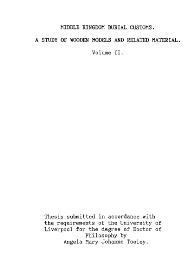| Main » Ad Board » ДРЕВЕН ЕГИПЕТ И АФРИКА » Религия и философия |
Angela Tooley - Middle Kingdom burial customs : A study of wooden models and related material
| 11.02.2018, 14:58 | |
Проучване за дървените статуетки на хора (прислужници, конкубини) и глинените модели на хамбари като част от погребалния инвентар в древноегипетските гробници от времето на Средното царство. Особено внимание е отделено на социалния статус на покойниците като определящ фактор за специфичните, индивидуални характеристики на тези гробни дарове. Студията е богато илюстрирана с уникални фотоси на анализираните артефакти.
- на английски език, от Google Docs,формат PDF, файловете не са архивирани. Сваляне с ляв бутон (downloading by left button) от страницата на предоставящия сървър, после през бутона стрелка надолу/after by down arrow button.
| |
| Views: 1700 | Placed till: 24.08.2022 | Rating: 0.0/0 | |

